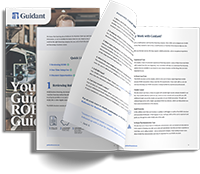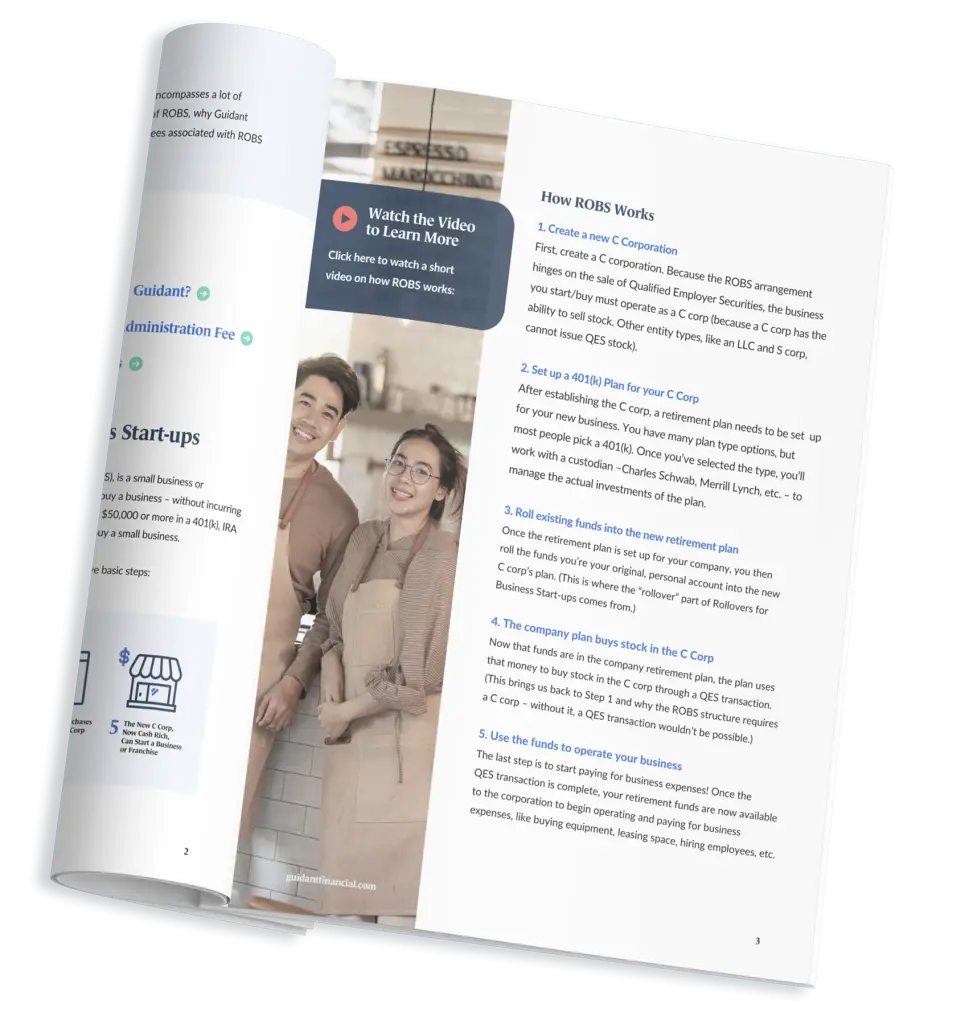A few months ago, we introduced a three-part series to Guidant Financial all about Employer Identification Numbers (EINs). We’re bringing this series back with an in-depth look at the C Corporation entity. What are C Corps, how do you file as a C Corp, and how does this entity differ from other legal structures like S Corporations
- What is a C Corporation?
- What are the four tax considerations associated with C Corporations?
- Benefits of being a C Corporation.
- Tax advantages (and more) for C Corps.
What is a C Corporation?
It’s pretty easy to get C Corporations confused with corporations or even S Corporations. Each one has a different definition — let’s focus on defining a C Corporation.
The “C” in C Corporation stands for a subchapter of the IRS tax code that governs this entity’s federal taxation. C Corporations are legal structures for businesses that tax profits separately from their owners. This means earnings are taxed at a corporate level with dividends distributed to shareholders that are also taxed at a personal level. This is commonly referred to as “double taxation.” Many small business owners are concerned about double taxation and will choose to incorporate as a pass-through entity, like an S Corporation, that allows them to avoid it.
Don’t let the potential of double taxation scare you away from filing as a C Corp! C Corporations can open up a promising future for businesses.
In fact, this entity is required for 401(k) business financing, in the event that an individual wants to use their retirement funds (an arrangement also known as Rollovers for Business Start-ups, or ROBS) to start a business or buy a franchise.
Because the entity is separate from its owners, a C Corp also has the ability to raise investment capital and create an initial public offering (IPO) that makes the entity a publicly traded company.
C Corporations also come with four tax considerations that allow the entity to claim more tax deductions and benefit write-offs than other entities. Let’s explore more about each one below.
4 Tax Considerations for C Corps
There are four tax considerations associated with C Corporations.
- Pass through of gains.
- Pass through of losses.
- Transfer of assets to the entity.
- Transfer of assets from the entity.
What does each term mean for C Corps?
1. Pass through of gains.
If you have incorporated as a C Corp, the gains, or profits, made by the company are distributed to its shareholders and taxed twice. This is double taxation. It imposes significant costs when money is transferred from the business to the shareholders, including the average corporate tax rate in the United States with an additional tax for shareholders on dividends paid to them through the corporation.
2. Pass through of losses.
If a shareholder wants to write off expected losses, they cannot do it under a C Corp structure. This is because a C Corporation cannot pass losses through to shareholders. The only exception to the rule is that corporations, as an entity, may carry losses backwards or forwards. Tax benefits of losses may then be applied to future or past profits. This gives corporations the chance to reduce tax burdens of a profitable year by carrying the loss over to the next year.
3. Transfer of assets to the entity.
A new business may come with certain assets, like land or buildings. These assets are transferred to the C Corp entity so that it may conduct business. Over time, assets may rise in value (like land, for example) and be worth more to the C Corp now than they were at their initial purchase. If this is the case, there may be a taxable event. This is where an asset purchased for lower price (like $500) and is now valued at $1000 after transfer to the corporation provides a gain of $500 to the original owner of the land or other asset. It’s highly recommended that business owners consult with licensed professionals before transferring these assets, as there are often specific tax rules accompanied with their sales.
4. Transfer of assets from the entity to the shareholders.
Pop quiz! What happens when a corporation transfers its assets to its shareholders? The answer is — wait for it — the shareholder is subject to double taxation. When a C Corp distributes assets to a shareholder, the corporation also pays tax on any gain in value of that asset. This means that the asset’s recipient receives a taxable gain on the asset that they received from the corporation.
Benefits of Being a C Corporation
We talked a little about how C Corporations, an entity separate from its owners, has the potential to raise investment capital and eventually go public. The entity also can claim more tax deductions and benefit write-offs. Are we missing any other benefits to forming a C Corp? Let’s take a look!
Tax Advantages (And More) for C Corps
Here are a few great advantages in store for those that choose C Corporation formations.
Compensation Write Offs
The shareholders of C Corps are considered salaried employees. This allows the C Corp to deduct its share of payroll taxes and even pay employees enough so there aren’t any taxable profits left by the end of the fiscal year. Remember, however, that while a C Corp can write off salaries and bonuses, the IRS will check in with the corporation. The IRS wants to make sure that the salaries correspond with services shareholders provide as employees.
Healthcare Benefits
Want to provide your employees with health insurance, dental plans, and disability insurance? (We hope you do!) C Corps can write off these benefits as business expenses and deduct 100% of medical premiums. They may also deduct fringe benefits as long as these benefits are equally available to everyone, from shareholders to employees.
Fiscal Year
This coincides with the calendar year for LLCs and S Corporations. C Corps, meanwhile, get a bit more flexibility in determining their fiscal year. It doesn’t need to directly correspond with the calendar year, so shareholders may shift income. Thanks to the ability to carry profits and losses backwards and forwards, their tax bills may be reduced thanks to having the decision to decide on the year in which they will pay taxes on bonuses and take losses.
Limited Liability
As the owner of a C Corporation, you receive liability protection. This ensures the separation of your personal and professional assets. If the corporation incurs any debts your personal assets, like houses or cars, will not be seized in the process.
Join us next month as we explore how to file as a C Corporation and what kinds of materials you’ll need on hand for the application process.
Deborah Sweeney is the CEO of MyCorporation.com which provides online legal filing services for entrepreneurs and businesses, startup bundles that include corporation and LLC formation, registered agent services, DBAs, and trademark and copyright filing services. You can find MyCorporation on Twitter at @MyCorporation.

















